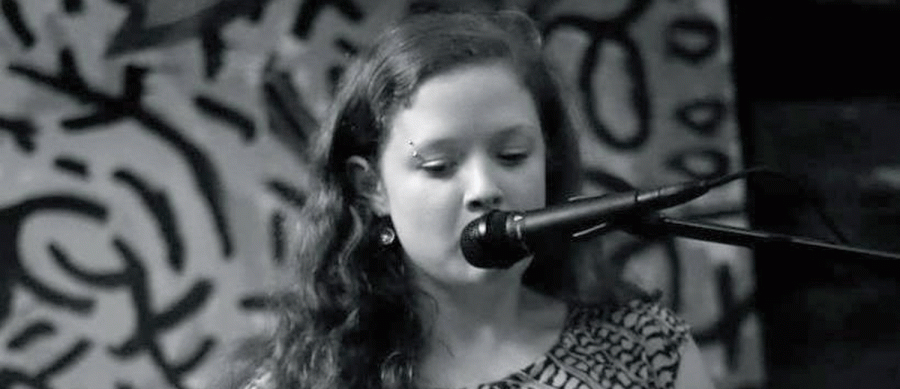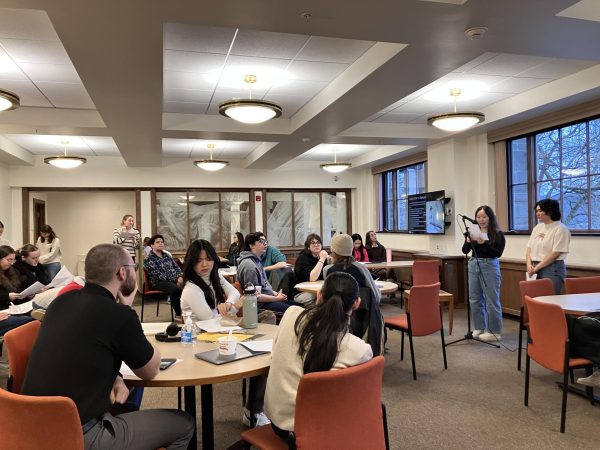Molly Brown and Poetic Hometown History
Wednesday afternoon, poet Molly Brown visited campus as this week’s featured author in the English Department Poetry Series. Brown read from her book, The Virginia State Colony for Epileptics and Feebleminded, which was awarded the 2016 Lexi Rudnitsky First Book Prize. The book details the traumatic experiences and rich emotional lives of fictional patients at the Virginia hospital. Brown’s works have been or will soon be featured in publications including Gulf Coast, Pleiades, Image, TriQuarterly Online, Kenyon Review, The Adroit Journal and The Rumpus. Colgate students and Hamilton residents attended the reading in Lawrence Hall at 4:30 p.m. Brown gave a brief background of her project, read key poems from her book and closed the event with a Q&A session.
Molly Brown grew up 15 minutes from The Virginia State Colony for Epileptics and Feebleminded, a place she saw often but didn’t really consider. In college, Brown became interested in the history of her hometown in rural Virginia and the south in general. She drove to the facility on a whim with a friend from school. Before delving into writing the book, Brown threw herself into research. Few patient accounts or interviews exist because patient feedback was considered irrelevant at the time. Brown searched for news articles, found the few patient accounts and interviews in existence and used the National Eugenics Database to gleam a solid understanding of her future subject matter. Brown found that her research expanded her outlook, and her work was consequently guided by the realities of the patient lives she studied rather than her own experiences.
“I’d never thought about this topic before and I thought it would be really interesting to see literature from this time period and this location,” sophomore Anna Rummel said.
The book is made up of a collection of poems, but unique characters are present and recurring throughout the work. In response to an audience member’s question regarding the specificity in various voices in different poems, Brown explained her use of tone and format to distinguish and indicate repeating voices. Although some characters are based off of actual people, they are imaginative. The purpose of her work is to draw attention to the violence disabled people were victim to and the inner lives that they lived. The characters are by no means intended to be stand-ins for actual patients. She chose to exclusively depict female characters despite presence of male patients in order to draw attention to the history of women’s threatened sexuality.
Brown wrote the first draft rapidly, in only four months, while teaching grade school in Texas. The writing consumed her life, creating a claustrophobic mindset that she believes reflects how patients must have felt. She got into the rhythm of writing and it became less about considering what would’ve happened and more about catching her thoughts as the characters came through her head. Many people felt that these specific insights into the author’s creative process and intentions were exciting and instructive.
“You feel like you’re hanging out with the writers a little bit. I think that it’s easy if you’re a writer to think that your work is more isolated. This challenges that notion because writing is about being a part of a community and writing about the world that you inhabit,” Olive B. O’Connor creative writing fellow Erin Mullikan said.







